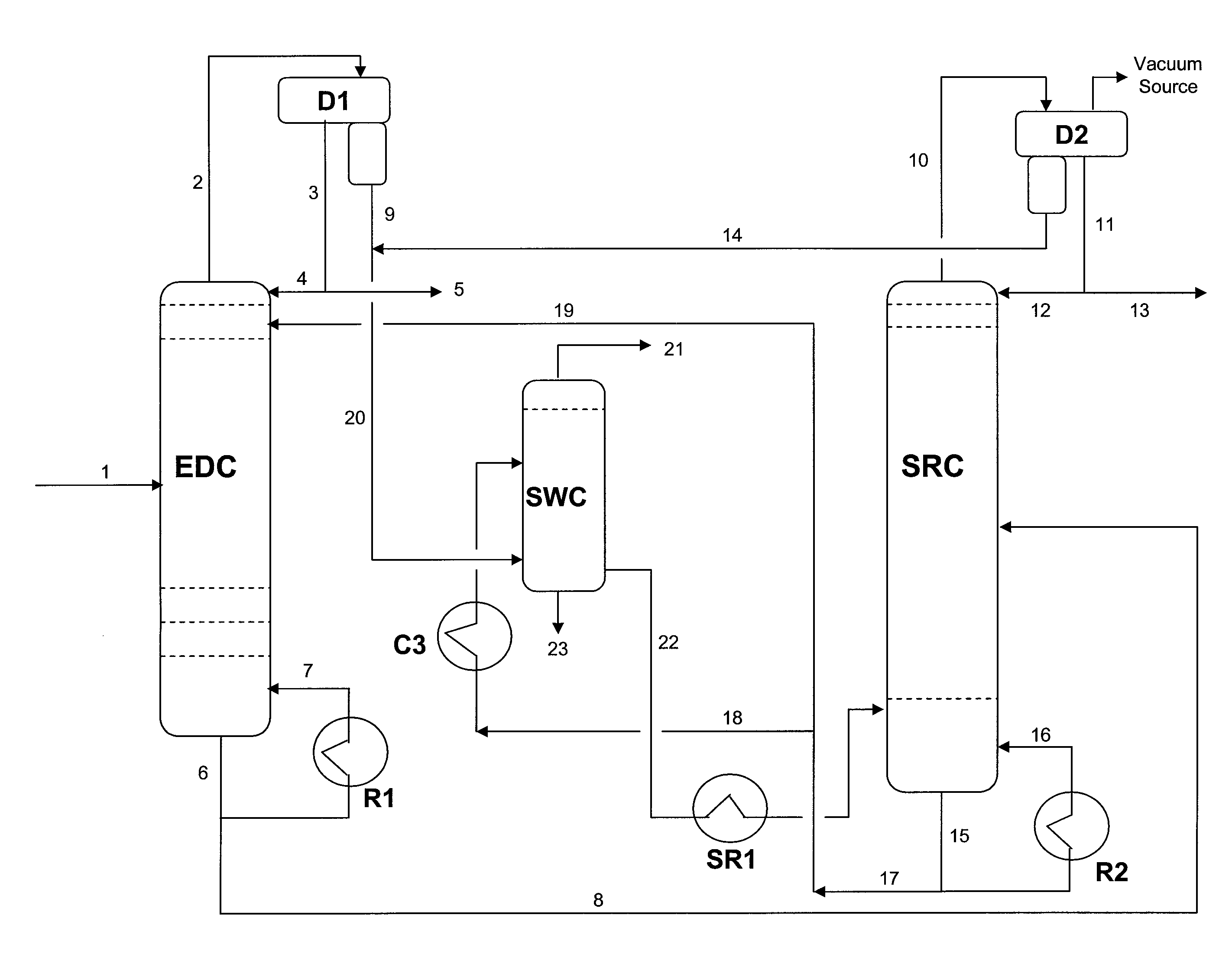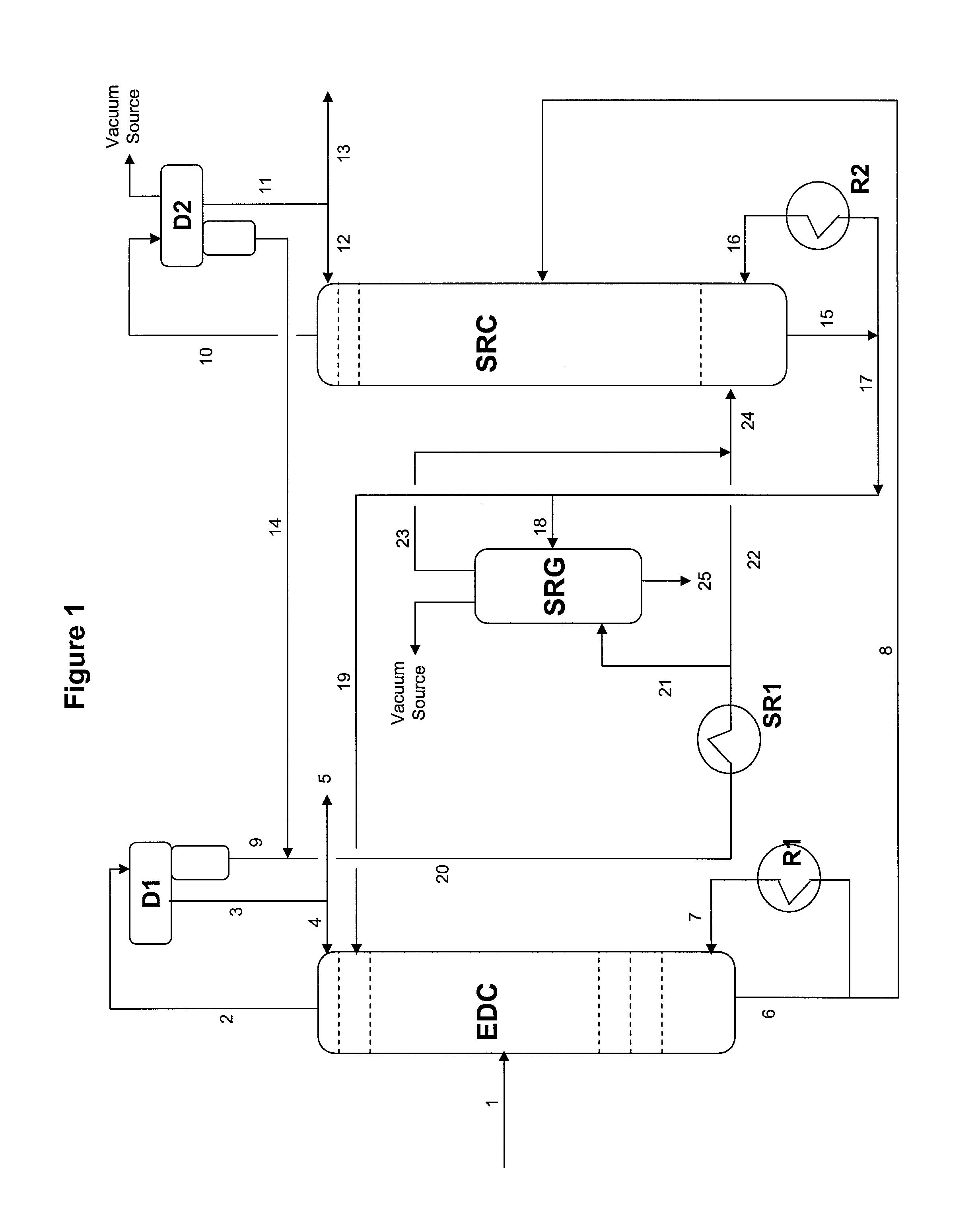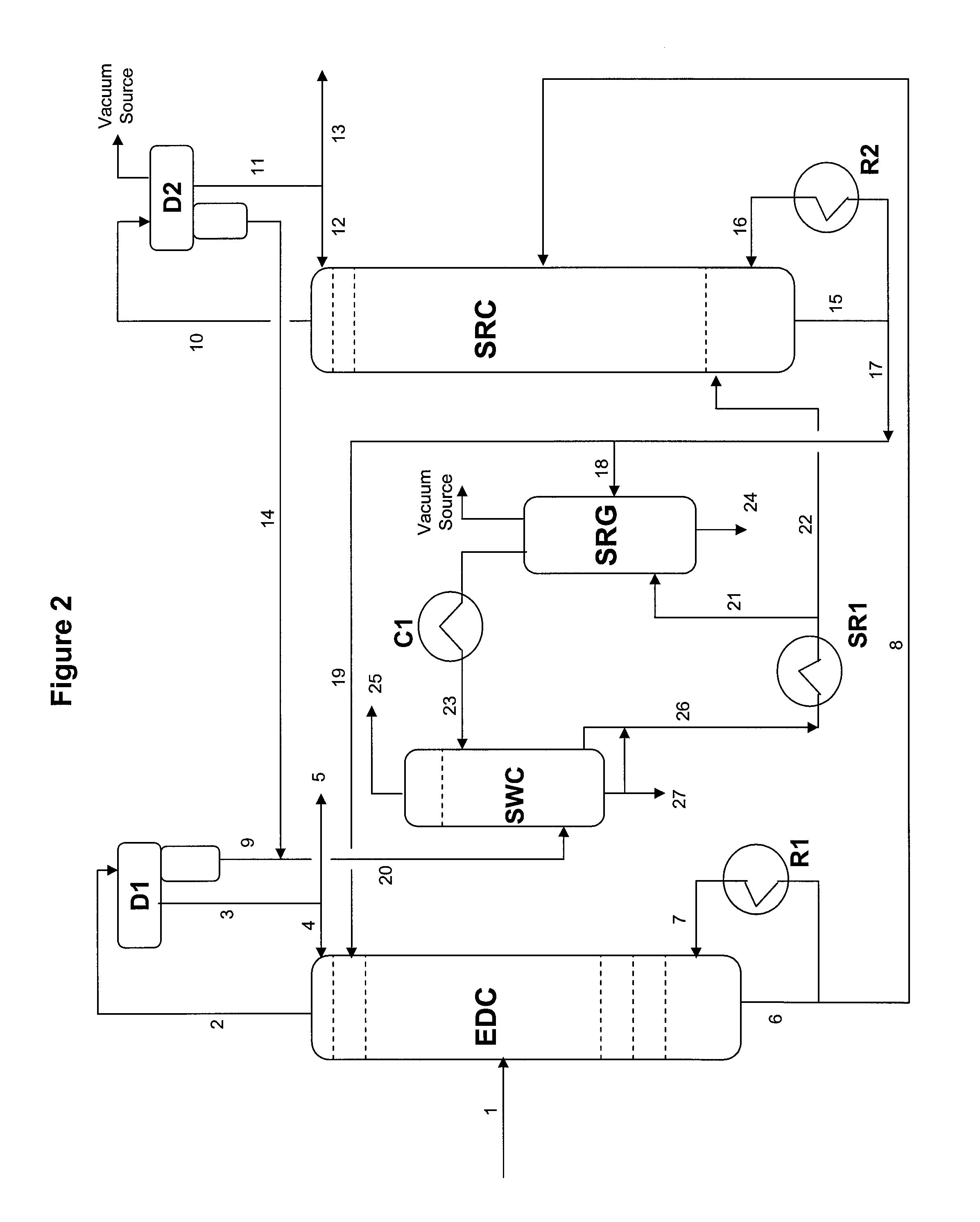Extractive distillation process for recovering aromatics from petroleum streams
a petroleum stream and distillation process technology, applied in the direction of hydrocarbon distillation, azeotropic/extractive distillation, separation processes, etc., can solve the problems of not being able to satisfactorily process unable to recover btx aromatics from the full boiling-range feedstock, and unable to achieve the full boiling-range aromatic feedstock. achieve the effect of maximizing the recovery of benzen
- Summary
- Abstract
- Description
- Claims
- Application Information
AI Technical Summary
Benefits of technology
Problems solved by technology
Method used
Image
Examples
example 1
[0106]An amount of approximately 6 grams of cumene (presenting C9 aromatic hydrocarbons) was added to 100 grams of sulfolane to make a homogeneous solution. To simulate a one-stage liquid-liquid extraction, 100 grams of the combined solution was thoroughly mixed with different amounts of deionized water in a separatory funnel at ambient temperature. The cumene and aqueous solvent phases were allowed to separate. The amounts of cumene phase measured for different runs are presented in Table 1.
[0107]
TABLE 1Cumene Phase RunsSolvent Mixture: 100 grams containing 5.66 wt % cumeneWater Add (grams)Cumene Phase (grams)Cumene Recovery (%)200.7413.16403.7466.02804.7684.011005.1590.931505.2692.872005.2893.35
[0108]Table 1 shows that water extraction is very effective in removing cumene (heavy aromatics) from sulfolane. More than 90% of cumene was extracted from sulfolane (containing as high as 5.66% cumene) under a water-to-sulfolane weight ratio of 1.0 in a one-stage extraction. Extraction per...
example 2
[0109]An amount of 1.37 grams of decahydronaphthalene (DCHN) (presenting C10 naphthenic hydrocarbons) was added to 100 grams of sulfolane to make a homogeneous solution. The solution was thoroughly mixed with 100 grams of the resulting solution and different amounts of deionized water in a separatory funnel at ambient temperature to allow the DCHN and aqueous solvent phases to separate. The amounts of cumene phase measured for different runs are presented in Table 2.
[0110]
TABLE 2Cumene Phase RunsSolvent Mixture: 100 grams containing 1.35 wt % DCHNWater Add (grams)DCHN Phase (grams)DCHN Recovery (%)100.312823.17200.637747.24400.895366.32801.005574.481501.011674.932001.097581.30
[0111]Table 2 illustrates that the water extraction according to the present invention is very effective for removing DCHN (heavy naphthenes) from sulfolane. More than 80% of DCHN was extracted from sulfolane (containing as high as 1.35% DCHN) under a water-to-sulfolane weight ratio of 2.0 in one-stage extracti...
example 3
[0112]An amount of 0.29 grams of n-dodecane (n-C12P) (presenting C12 paraffinic hydrocarbons) was added to 100 grams of sulfolane to make a homogeneous solution. Again, a mix of 100 grams of sulfolane was thoroughly mixed and made of a solution with different amounts of deionized water in a separatory funnel at ambient temperature. The n-C12P and aqueous solvent phases were allowed to separate. The amounts of n-C12P phase measured for different runs are presented in Table 3.
[0113]
TABLE 3n-C12P Phase RunsSolvent Mixture: 100 grams containing 0.29 wt % n-C12PWater Add (grams)n-C12P Phase (grams)n-C12P Recovery (%)200.094832.69400.148551.21800.217274.901000.273194.171500.273994.45
[0114]Table 3 shows that water extraction is very effective in removing n-C12P (heavy paraffins) from sulfolane. Nearly 95% of n-C12P was extracted from sulfolane (containing 0.29% n-C12P) under a water-to-sulfolane weight ratio of 1.0 in one-stage extraction. Therefore, extraction performance would be substan...
PUM
| Property | Measurement | Unit |
|---|---|---|
| pressure | aaaaa | aaaaa |
| temperature | aaaaa | aaaaa |
| pressure | aaaaa | aaaaa |
Abstract
Description
Claims
Application Information
 Login to View More
Login to View More - R&D
- Intellectual Property
- Life Sciences
- Materials
- Tech Scout
- Unparalleled Data Quality
- Higher Quality Content
- 60% Fewer Hallucinations
Browse by: Latest US Patents, China's latest patents, Technical Efficacy Thesaurus, Application Domain, Technology Topic, Popular Technical Reports.
© 2025 PatSnap. All rights reserved.Legal|Privacy policy|Modern Slavery Act Transparency Statement|Sitemap|About US| Contact US: help@patsnap.com



